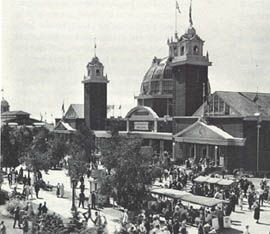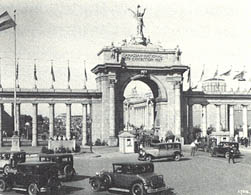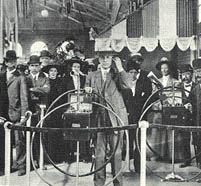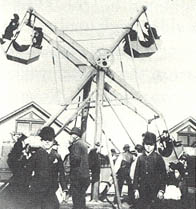The Canadian National
Exhibition
There's still a lot of yesterday at the
Canadian National Exhibition. Originally incorporated in 1879 to promote
the arts, agriculture and industry in Canada, it grew to become the world's
largest annual exhibition.
In many spectacular exhibition style-buildings,
such as the Crystal Palace, Canadian achievements were introduced to the
public. It was determined to be a true showcase, exhibiting the very best
in Canadian life. Many inventions were premiered and tested during the
Exhibition by the leaders and pioneers in the fields of agriculture, transportation,
electricity, communications and medicine. The Toronto Industrial Exhibition,
as it was then known, was the first fair in the world to be lit with electricity
in 1882 and the testing of the first electric streetcar in North America
premiered the following year.

|

|

|

|
| 1. CNE Government
Building, ca. 1934. 2. Princes'
Gates, 1929, named after the 1927 Royal Visitors, H.R.H. Edward, Prince
of Wales, and his brother, Prince George. 3. Collins
Wireless Demonstration, ca. 1899, Conducted in the Machinery Hall. 4.
Early
Hand-cranked Ferris Wheel, ca. 1895. |
A co-operative effort by all levels of government
and the private sector, has allowed the Canadian National Exhibition to
continue to present the latest achievements in agriculture, arts and industry
in Canada. Today the CNE hosts many events, including the Canadian International
Air Show. It is the world's largest air show and has been a popular feature
of the CNE since 1956. In addition, the Ex celebrates over fifty years
with Canada's Conklin Shows, providing fun and innovative amusements to
CNE midway fans. The CNE's live outdoor concerts also feature some of the
best performers in the world of entertainment.
The Canadian National Exhibition will continue
to provide the millions of people who visit the grounds each year, with
the magic of yesterday and today. The CNE will also continue to meet the
challenge of the future: To be the world's largest and greatest annual
exhibition.



